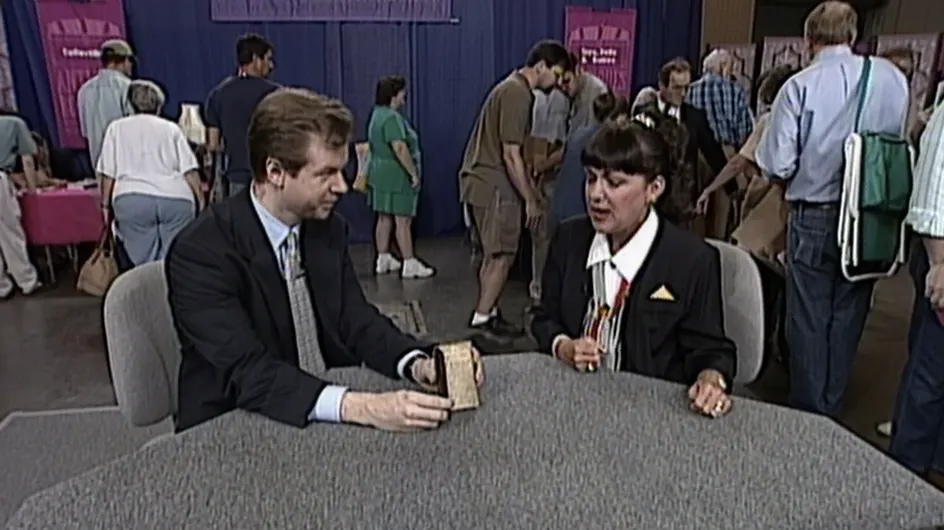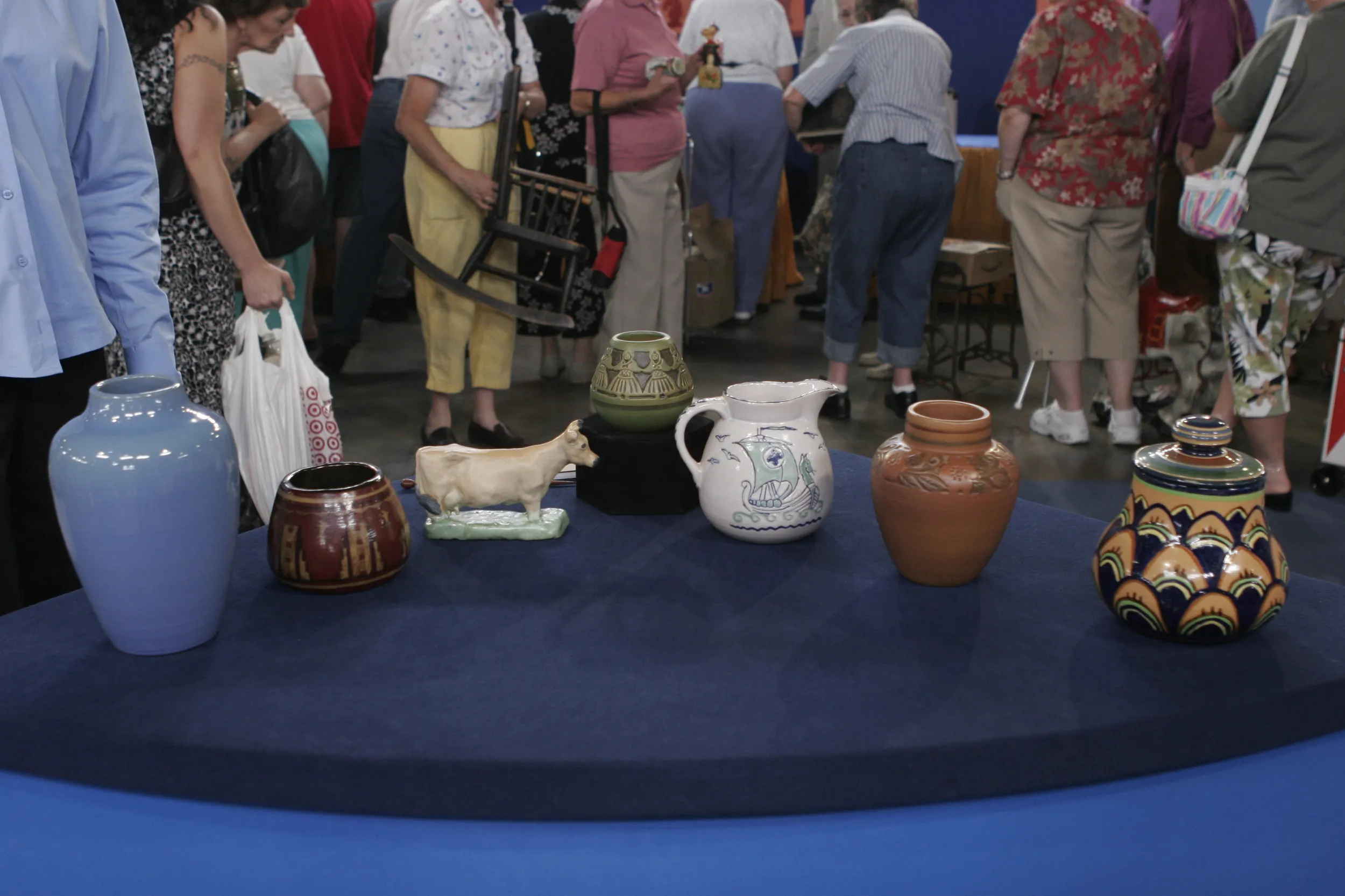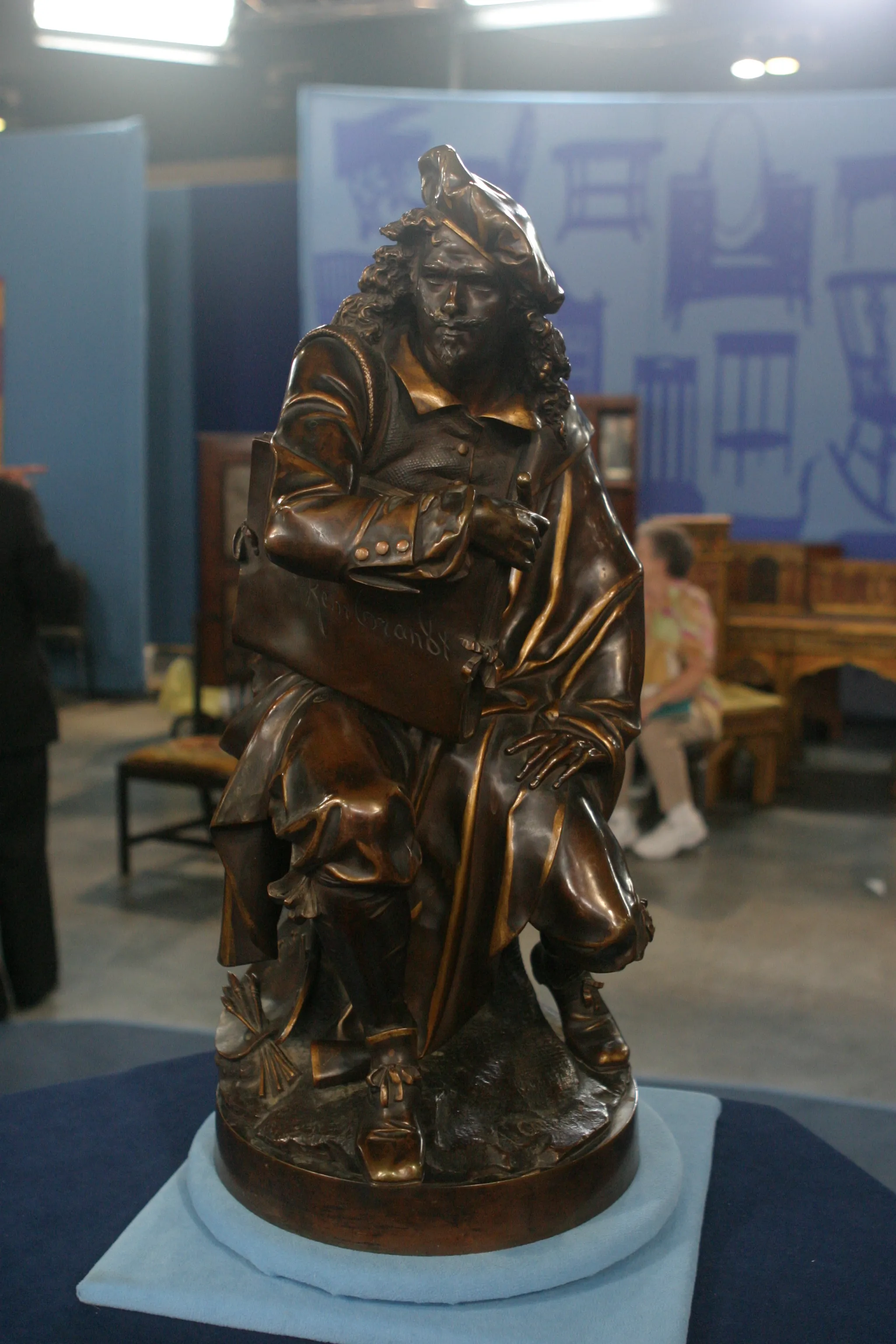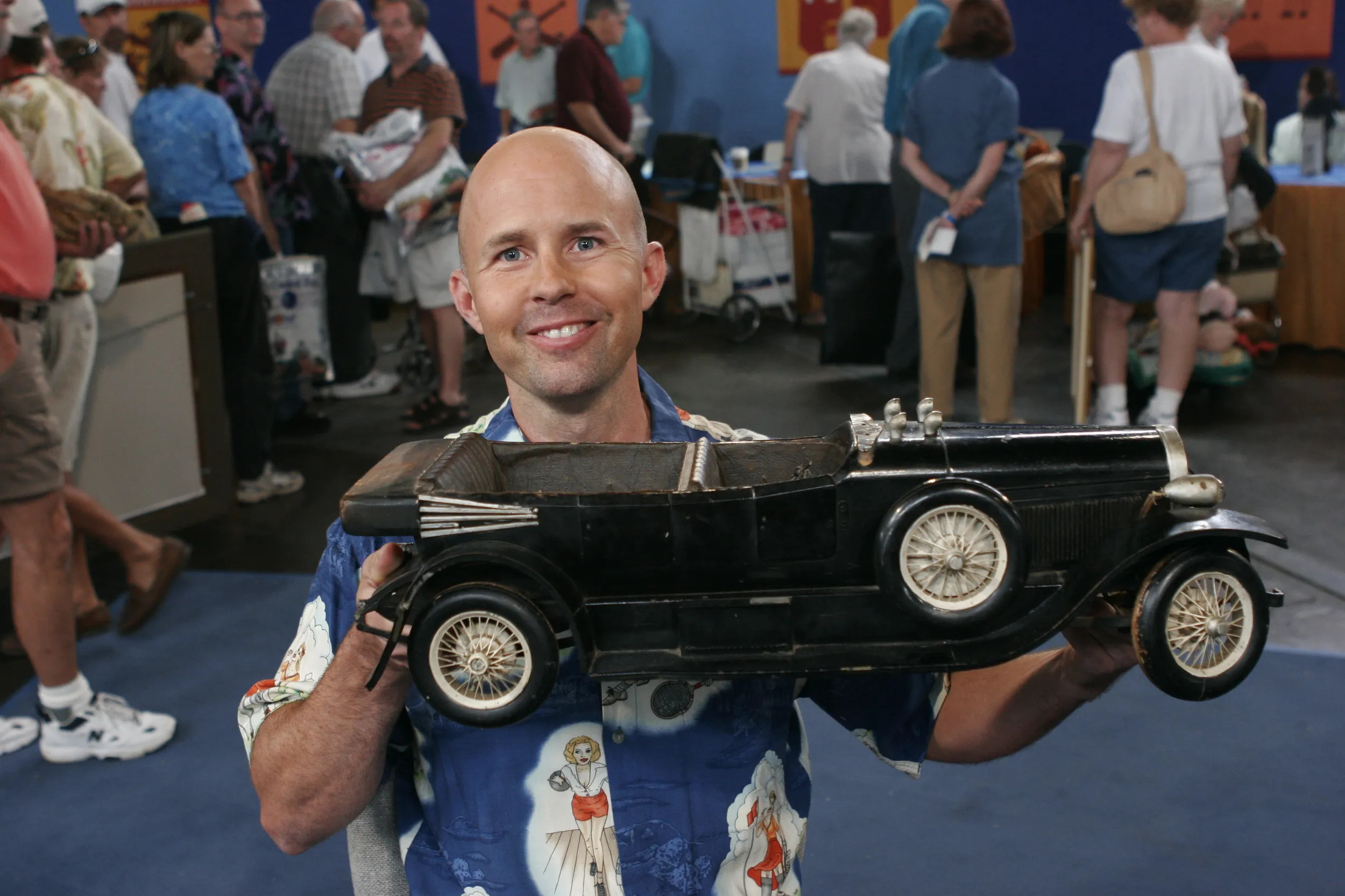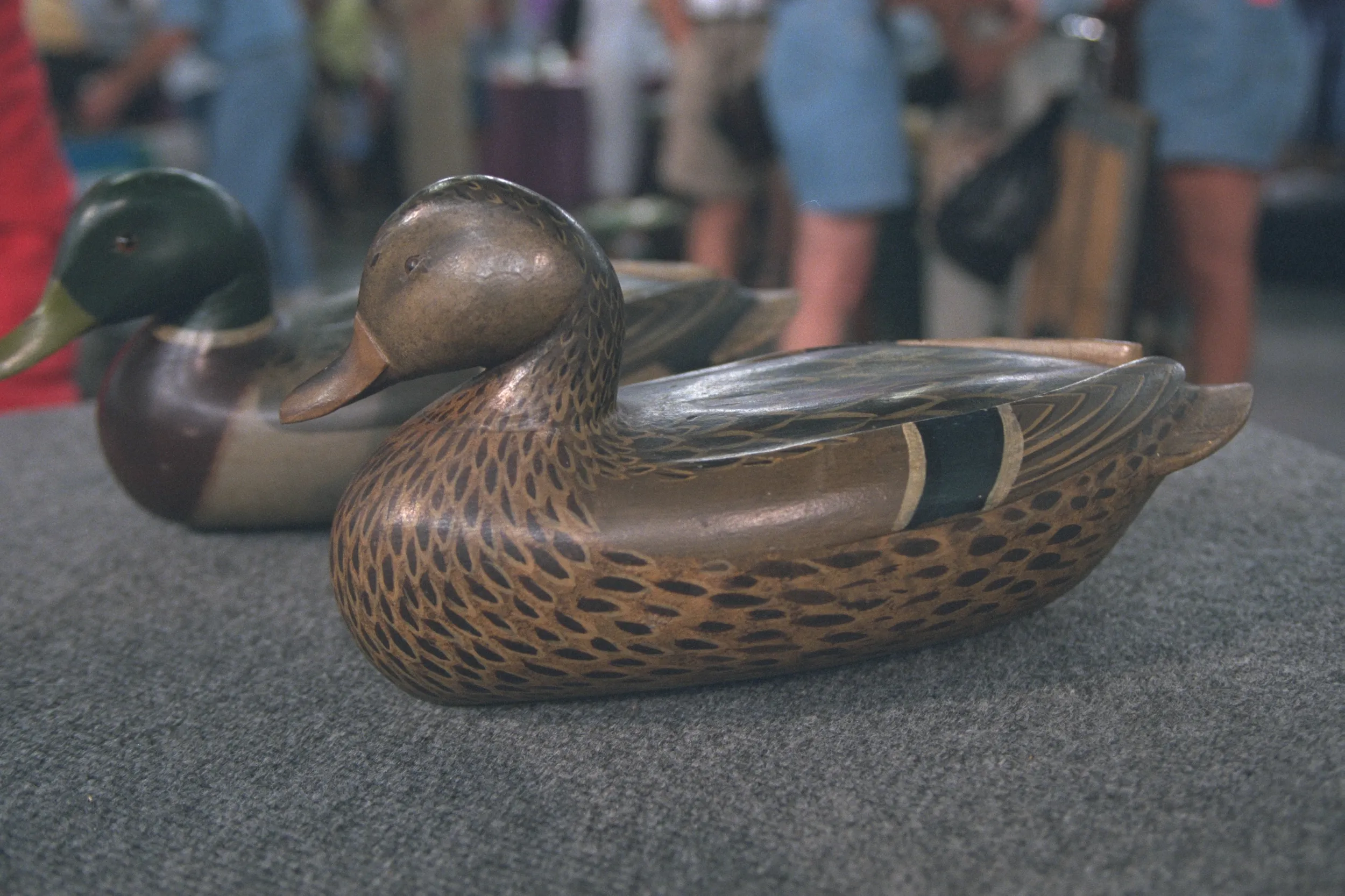GUEST: I know nothing about it. I bought it at a house sale. I was told it was an opium pipe.
APPRAISER: Oh, really? Well, it's actually just a figure. Being a figure is enough, because it's quite charming. Made in China for export to the West. They probably told you it was a pipe because on the back here there are a number of firing holes and even in the top of his little head.
GUEST: They said you smoked through the head.
APPRAISER: Those are actually holes so that the hot air can escape while the piece is being fired in the kiln. But he is a Chinese export figure made simply for decorative purposes, to place maybe in a group on a shelf in your house, decorated in what we call the "Famille Rose" enamels--the family of pinks, purples, yellows, greens, as you see here, very colorful enamels. He's a happy little boy. He's carrying a ruyi scepter, which is a symbol of wealth and prosperity, of authority also, and has quite a nice smile. These were figures that represented the exotic East at the time, around 1800, when China was still far, far away from Europe.
GUEST: Why does he not have feet?
APPRAISER: He does actually have feet. These are the ends of his little black shoes and he has one knee raised and one leg tucked up under him. You would have found perhaps a couple of maidens, other little happy boys, maybe some Chinese deities in a group of figures all together if you went to a prosperous merchant's house in London or Amsterdam around 1800, 1820. Do you have any idea of the worth of this figure?
GUEST: I paid $49 for it.
APPRAISER: Did you really, in a yard sale?
GUEST: Yeah, house sale.
APPRAISER: That's terrific. At auction today, this little Chinese export figure would bring in the range of $600 to $800.
GUEST: Great.
APPRAISER: So I'd say you did pretty well. You have a happy little guy to look at also.
GUEST: That's great, yeah.
